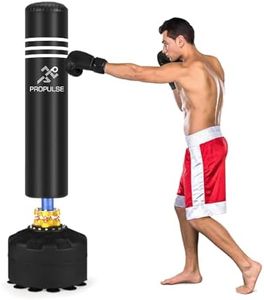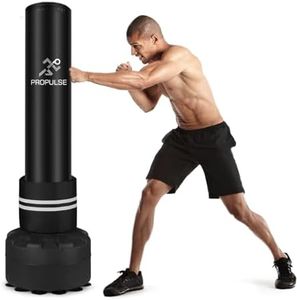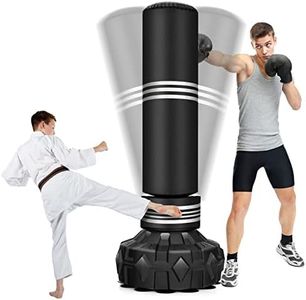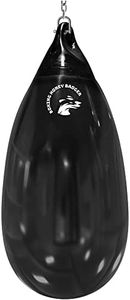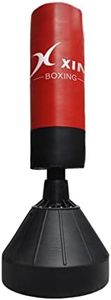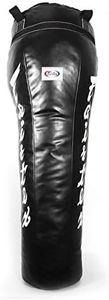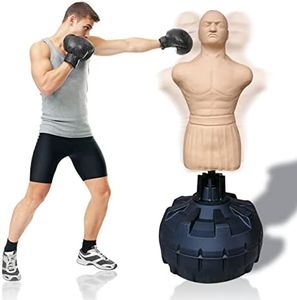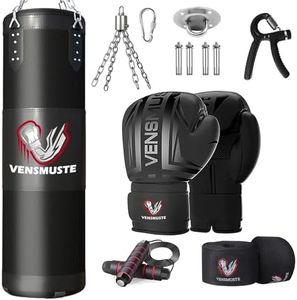We Use CookiesWe use cookies to enhance the security, performance,
functionality and for analytical and promotional activities. By continuing to browse this site you
are agreeing to our privacy policy
10 Best Heavy Punching Bags
From leading brands and best sellers available on the web.By clicking on a link to a third party's website, log data is shared with that third party.
Buying Guide for the Best Heavy Punching Bags
Choosing the right heavy punching bag is all about matching the bag to your training goals and physical needs. A punching bag that's suited to your level and type of workout will help you improve your technique, build strength, and avoid injury. Before you buy, think about where you'll put the bag, how you plan to use it—whether for general fitness, martial arts, or boxing—and your own size and skill level. Exploring the main features of punching bags will make it much easier to find something that's perfect for your routine.WeightThe weight of a heavy punching bag affects how much it swings and how realistic the resistance feels when you hit it. Heavier bags (usually over 100 pounds) are best for hard hitters and advanced users as they offer less movement and provide a challenging workout. Medium-weight bags (around 70 to 100 pounds) are versatile and suitable for most adults looking to develop power and technique. Lighter bags (40 to 70 pounds) swing more and are ideal for speed and practicing footwork, or for younger users. Your own size and strength should guide your choice; generally, an appropriate bag weighs about half your body weight.
Outer MaterialThe outer material of a punching bag determines its durability, comfort, and feel when struck. Leather offers a soft, realistic feel and is highly durable, making it popular for long-term use but it does require maintenance. Synthetic materials like vinyl and polyurethane are more affordable and water-resistant, though they may wear out sooner under heavy use. Canvas bags are tough but might be rough on the hands. If you plan on intensive or shared use, prioritize tougher materials; for casual and at-home workouts, synthetic or canvas may be sufficient.
Filling MaterialThe filling inside a bag affects its firmness and shock absorption. Common fillings include shredded cloth (soft and forgiving), sand (firmer and heavy, but may settle unevenly), and foam (consistent density and easier on joints). Some bags have a combination of materials for balanced resistance. If you want a softer strike and to avoid wrist injuries, look for cloth or foam-filled bags. For more intense, heavy-hitting workouts, sand-filled or mixed fillings may suit you better.
Size and ShapeHeavy bags come in various sizes and shapes, such as traditional cylindrical bags, uppercut bags, or angled bags. Longer bags (4 to 6 feet) allow for kicking as well as punching and are better suited for martial arts; shorter bags (about 3 feet) focus mostly on punching. Wider bags mimic the feel of a torso, making them good for body shots. If you want to practice both punches and kicks, a longer, heavier bag is best. For boxing-only workouts, a standard, cylindrical bag will do the job.
Mounting OptionsHow you set up your punching bag significantly impacts your training experience. Hanging bags are mounted from the ceiling or a stand and give natural swing, testing your timing and footwork. Freestanding bags are attached to a weighted base and don’t require installation; they're easy to move and ideal for home setups with limited space. If your training space is flexible and you want a more realistic workout, a hanging bag is better. For quick setup and portability, a freestanding bag is the way to go.
